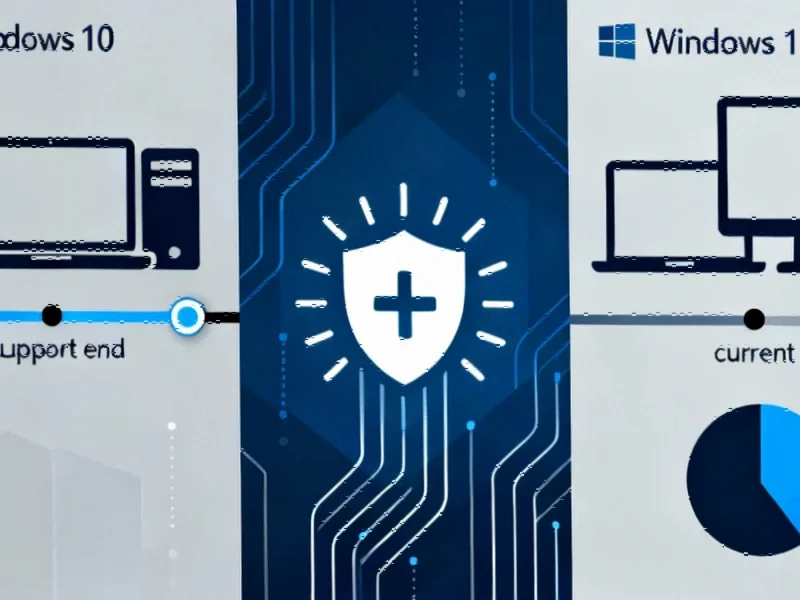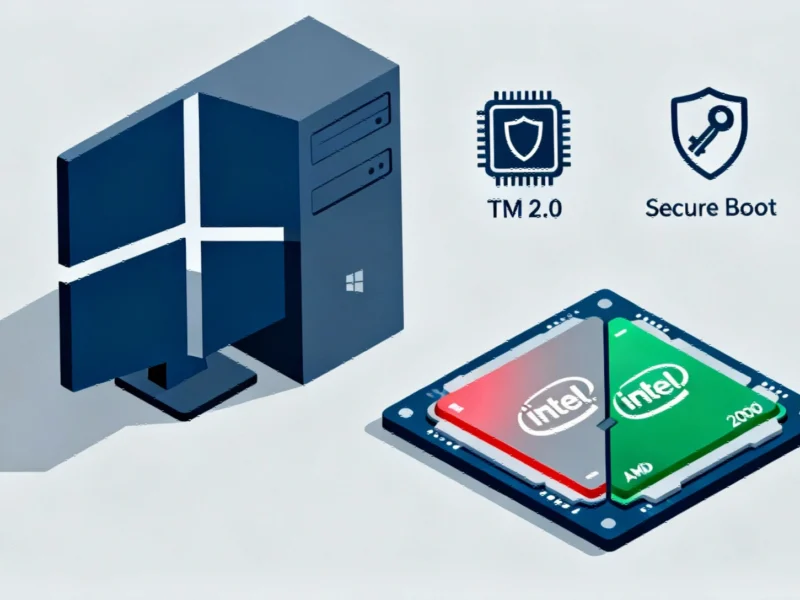Critical Input Failure Cripples Windows 11 Recovery Tools
Microsoft’s latest Windows 11 25H2 October update (KB5066835) has introduced a severe technical issue that renders the Windows Recovery Environment (WinRE) completely unusable due to non-functional keyboard and mouse input. This development represents more than just another software bug—it highlights systemic challenges in Microsoft’s quality assurance processes that directly impact enterprise computing environments where reliability is paramount.
The Windows Recovery Environment serves as a critical troubleshooting toolkit that activates automatically during system failures or can be manually accessed for system repairs. With input devices becoming unresponsive within WinRE, users are effectively locked out from performing essential recovery operations, including system restore, startup repair, and command-line troubleshooting. This creates significant vulnerability for systems that encounter boot problems or OS corruption.
Enterprise Implications and Workaround Limitations
For industrial and enterprise users who depend on stable computing environments for critical operations, this WinRE failure presents substantial operational risk. The inability to access recovery tools means that system failures could result in extended downtime, potentially affecting production lines, data processing, and other time-sensitive operations. Microsoft has confirmed that USB keyboards and mice continue to function normally within the main Windows operating system, but this offers little consolation when systems fail to boot properly.
Industry professionals have noted that this incident follows a pattern of problematic updates that have affected core Windows functionality. The timing is particularly concerning given Microsoft’s intensified AI development initiatives and the company’s broader strategic shifts in platform management.
Broader Context of Windows Update Challenges
This WinRE issue represents the latest in a series of Windows 11 update problems that have plagued users in recent months. Previous updates have caused localhost functionality failures and other system instabilities. Microsoft maintains a dedicated known issues page for Windows 11 version 25H2, which now includes this critical WinRE problem among its listed concerns.
The situation echoes broader industry conversations about resource allocation and quality assurance in technology development. As companies navigate complex technological transitions, maintaining stability in core infrastructure becomes increasingly challenging.
Microsoft’s Response and Resolution Timeline
Microsoft has acknowledged the problem and stated that engineers are “working to release a solution to resolve this issue in the coming days.” The company has promised to provide additional information as it becomes available. However, for enterprise users operating in time-sensitive environments, this uncertainty creates operational planning challenges.
The incident occurs against a backdrop of significant industry discussions about technology reliability and the balance between innovation and stability. As Microsoft continues to evolve its platform with new features and security requirements, maintaining backward compatibility and system reliability remains an ongoing challenge.
Protective Measures and Recommended Actions
Until Microsoft releases an official patch, industrial and enterprise users should consider implementing several protective measures:
- Delay deployment of the KB5066835 update on critical systems
- Verify system restore points are current and functional
- Maintain bootable recovery media as an alternative to WinRE
- Document manual recovery procedures for common system failures
These precautions can help mitigate the impact of the WinRE failure while awaiting Microsoft’s resolution. The company’s track record suggests that most update-related issues are eventually addressed, but the recurring nature of these problems highlights the importance of robust testing and quality control in enterprise software development.
As Windows continues to evolve, both individual users and enterprise administrators must balance the benefits of new features against the potential stability costs. This latest incident serves as a reminder that even core system components can be vulnerable to update-related failures, emphasizing the need for comprehensive backup strategies and contingency planning in industrial computing environments.
This article aggregates information from publicly available sources. All trademarks and copyrights belong to their respective owners.
Note: Featured image is for illustrative purposes only and does not represent any specific product, service, or entity mentioned in this article.



